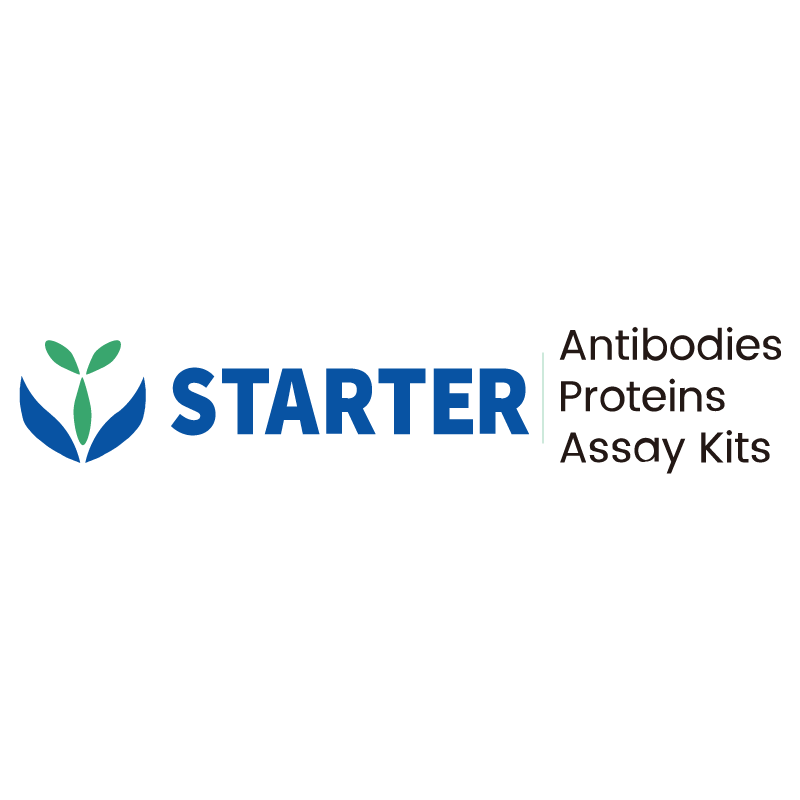WB result of SATB1 + SATB2 Recombinant Mouse mAb
Primary antibody: SATB1 + SATB2 Recombinant Rabbit mAb at 1/1000 dilution
Lane 1: HT-1080 whole cell lysate 20 µg
Lane 2: Saso-2 whole cell lysate 20 µg
Secondary antibody: Goat Anti-mouse IgG, (H+L), HRP conjugated at 1/10000 dilution
Predicted MW: 82 kDa
Observed MW: 100 kDa
This blot was developed with high sensitivity substrate
Product Details
Product Details
Product Specification
| Host | Mouse |
| Antigen | SATB1+SATB2 |
| Synonyms | DNA-binding protein SATB1; Special AT-rich sequence-binding protein 1; DNA-binding protein SATB2; Special AT-rich sequence-binding protein 2 |
| Location | Nucleus |
| Accession | Q01826、 Q9UPW6 |
| Clone Number | S-3382 |
| Antibody Type | Mouse mAb |
| Isotype | IgG1,k |
| Application | WB, ICC |
| Reactivity | Hu, Ms, Rt |
| Positive Sample | HT-1080, Saso-2, NIH/3T3, normal mouse E18 foetal brain |
| Purification | Protein G |
| Concentration | 2 mg/ml |
| Conjugation | Unconjugated |
| Physical Appearance | Liquid |
| Storage Buffer | PBS, 40% Glycerol, 0.05% BSA, 0.03% Proclin 300 |
| Stability & Storage | 12 months from date of receipt / reconstitution, -20 °C as supplied |
Dilution
| application | dilution | species |
| WB | 1:1000 | Hu, Ms, Rt |
| ICC | 1:500 | Hu |
Background
SATB1 and SATB2 are evolutionarily related, chromatin-remodeling transcription factors that share a common CUT-domain architecture for high-affinity binding to matrix-attachment regions, yet they orchestrate distinct developmental programs: SATB1 acts as a global organizer of T-cell chromatin during thymocyte maturation and promotes breast-cancer metastasis through epithelial-to-mesenchymal transition, whereas SATB2 is indispensable for craniofacial patterning, cortical neuron identity, and osteoblast differentiation by forming higher-order chromatin loops that juxtapose enhancers of lineage-specific genes; both proteins recruit histone-modifying enzymes and the NuRD complex, but their mutually exclusive expression patterns and differential interaction partners explain why SATB1 depletion enhances neural differentiation while SATB2 loss yields cleft palate and intellectual disability, making the SATB1/SATB2 balance a critical epigenetic switch in immunity, neurodevelopment, and tumorigenesis.
Picture
Picture
Western Blot
WB result of SATB1 + SATB2 Recombinant Mouse mAb
Primary antibody: SATB1 + SATB2 Recombinant Rabbit mAb at 1/1000 dilution
Lane 1: NIH/3T3 whole cell lysate 20 µg
Lane 2: normal mouse E18 foetal brain lysate 20 µg
Secondary antibody: Goat Anti-mouse IgG, (H+L), HRP conjugated at 1/10000 dilution
Predicted MW: 82 kDa
Observed MW: 100 kDa
This blot was developed with high sensitivity substrate
Immunocytochemistry
ICC shows positive staining in HT-1080 cells. Anti- SATB1 + SATB2 antibody was used at 1/500 dilution (Green) and incubated overnight at 4°C. Goat polyclonal Antibody to Rabbit IgG - H&L (Alexa Fluor® 488) was used as secondary antibody at 1/1000 dilution. The cells were fixed with 100% ice-cold methanol and permeabilized with 0.1% PBS-Triton X-100. Nuclei were counterstained with DAPI (Blue). Counterstain with tubulin (Red).


